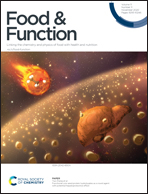Melatonin rich foods in our diet: food for thought or wishful thinking?
Abstract
Melatonin continues to generate interest in the scientific community and the general public. In recent years, there has been growing interest in the possibility that melatonin present in human foods may have physiological effects. This has led to the promotion of “melatonin-rich” foods and “phyto-melatonin”. The night time secretion of endogenous melatonin from the pineal gland provides a daily circadian signal which is detected by receptors in various tissues. In animals the changing circadian pattern of melatonin secretion across seasons is important to them to program their reproductive behaviours to ensure optimal reproductive success, while in humans it probably plays a prominent role in anchoring sleep to the night period. When melatonin is administered in non-physiological, milligram amounts to humans, the onset of sleep can be manipulated and in larger doses anti-oxidant properties may emerge. Melatonin-rich foods are considered in this context too, but the question remains whether the amounts of melatonin in the food can be expected to be high enough to realistically change sleep or have antioxidant properties. In this review, papers reporting the effects of ingestion of melatonin-rich food on plasma or saliva melatonin or its urinary metabolite are critically evaluated. Unfortunately many of the papers are compromised by poor experimental design and assay methodologies and uncritical evaluation of results. The conclusion drawn from this review is that it is wishful thinking to expect that the amount of melatonin in “melatonin-rich” foods will impact on sleep or have any other physiological impact.

- This article is part of the themed collection: Food & Function Recent HOT articles

 Please wait while we load your content...
Please wait while we load your content...